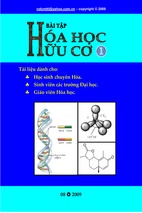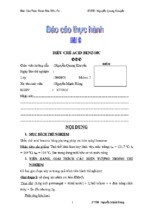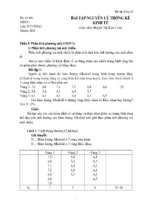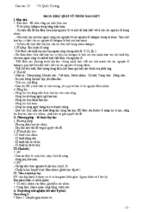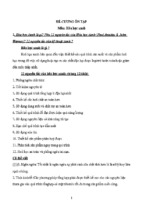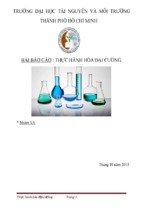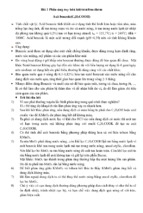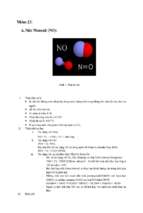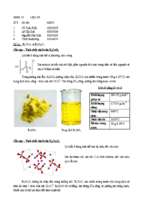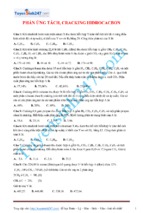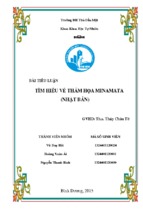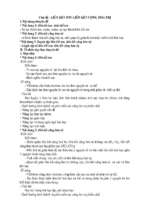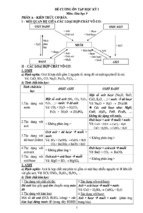The Nitro Group in Organic Synthesis. Noboru Ono
Copyright © 2001 Wiley-VCH
ISBNs: 0-471-31611-3 (Hardback); 0-471-22448-0 (Electronic)
THE NITRO GROUP IN
ORGANIC SYNTHESIS
ORGANIC NITRO CHEMISTRY SERIES
Managing Editor
Dr. Henry Feuer
Purdue University
West Lafayette, Indiana 47907
USA
EDITORIAL BOARD
Hans H. Baer
Ottawa, Canada
George Olah
Los Angeles, CA, USA
Robert G. Coombes
London, England
Noboru Ono
Matsuyama, Japan
Leonid T. Eremenko
Chernogolovka, Russia
C.N.R Rao
Bangalore, India
Milton B. Frankel
Canoga Park, CA, USA
John H. Ridd
London, England
Philip C. Myhre
Claremont, CA, USA
Dieter Seebach
Zurich, Switzerland
Arnold T. Nielsen
China Lake, CA, USA
François Terrier
Rouen, France
Wayland E. Noland
Minneapolis, MN, USA
Heinz G. Viehe
Louvain-la-Neuve, Belgium
Also in the Series:
Nitroazoles: The C-Nitro Derivatives of Five-Membered N- and N,O-Heterocycles
by Joseph H. Boyer
Nitrile Oxides, Nitrones, and Nitronates in Organic Synthesis: Novel Strategies in Synthesis
by Kurt B.G. Torssell
Nitro Compounds: Recent Advances in Synthesis and Chemistry
Edited by Henry Feuer and Arnold T. Nielsen
Nitration: Methods and Mechanisms
by George A. Olah, Ripudaman Malhotra, and Sabhash C. Narong
Nucleophilic Aromatic Displacement: The Influence of the Nitro Group
by François Terrier
Nitrocarbons
by Arnold T. Nielsen
THE NITRO GROUP IN
ORGANIC SYNTHESIS
Noboru Ono
A JOHN WILEY & SONS, INC., PUBLICATION
New York
Chichester
Weinheim
Brisbane
Singapore
Toronto
Designations used by companies to distinguish their products are often claimed as trademarks. In all instances where John Wiley & Sons, Inc., is aware of a claim, the product names appear in initial capital or
ALL CAPITAL LETTERS. Readers, however, should contact the appropriate companies for more complete information regarding trademarks and registration.
Copyright © 2001 by Wiley-VCH. All rights reserved.
No part of this publication may be reproduced, stored in a retrieval system or transmitted in any form or
by any means, electronic or mechanical, including uploading, downloading, printing, decompiling, recording or otherwise, except as permitted under Sections 107 or 108 of the 1976 United States Copyright
Act, without the prior written permission of the Publisher. Requests to the Publisher for permission
should be addressed to the Permissions Department, John Wiley & Sons, Inc., 605 Third Avenue, New
York, NY 10158-0012, (212) 850-6011, fax (212) 850-6008, E-Mail: PERMREQ @ WILEY.COM.
This publication is designed to provide accurate and authoritative information in regard to the subject
matter covered. It is sold with the understanding that the publisher is not engaged in rendering professional services. If professional advice or other expert assistance is required, the services of a competent
professional person should be sought.
ISBN 0-471-22448-0
This title is also available in print as ISBN 0-471-31611-3.
For more information about Wiley products, visit our web site at www.Wiley.com.
CONTENTS
Series Foreword
ix
Preface
xi
Acknowledgments
xiii
Abbreviations
xv
1. Introduction
1
2. Preparation of Nitro Compounds
3
2.1 Nitration of Hydrocarbons / 3
2.1.1 Aromatic Compounds / 3
2.1.2 Alkanes / 7
2.1.3 Activated C-H Compounds / 10
2.1.4 Alkenes / 11
2.1.5 Synthesis of =-Nitro Ketones / 16
2.1.6 Nitration of Alkyl Halides / 17
2.2 Synthesis of Nitro Compounds by Oxidation / 20
2.2.1 Oxidation of Amines / 20
2.2.2 Oxidation of Oximes / 21
3. The Nitro-Aldol (Henry) Reaction
30
3.1 Preparation of β-Nitro Alcohols / 31
3.2 Derivatives from β-Nitro Alcohols / 38
3.2.1 Nitroalkenes / 38
3.2.2 Nitroalkanes / 44
3.2.3 =-Nitro Ketones / 46
3.2.4 >-Amino Alcohols / 48
3.2.5 Nitro Sugars and Amino Sugars / 48
3.3 Stereoselective Henry Reactions and Applications to Organic Synthesis / 51
4. Michael Addition
70
4.1 Addition to Nitroalkenes / 70
v
vi
CONTENTS
4.1.1 Conjugate Addition of Heteroatom-Centered Nucleophiles / 70
4.1.2 Conjugate Addition of Heteroatom Nucleophiles and Subsequent
Nef Reaction / 80
4.1.3 Conjugate Addition of Carbon-Centered Nucleophiles / 85
4.2 Addition and Elimination Reaction of β-Heterosubstituted Nitroalkenes / 100
4.3 Michael Addition of Nitroalkanes / 103
4.3.1 Intermolecular Addition / 103
4.3.2 Intramolecular Addition / 113
4.4 Asymmetric Michael Addition / 115
4.4.1 Chiral Alkenes and Chiral Nitro Compounds / 115
4.4.2 Chiral Catalysts / 118
5. Alkylation, Acylation, and Halogenation of Nitro Compounds
126
5.1
5.2
5.3
5.4
5.5
Alkylation of Nitro Compounds / 126
Acylation of Nitroalkanes / 128
Ring Cleavage of Cyclic α-Nitro Ketones (Retro-Acylation) / 131
Alkylation of Nitro Compounds via Alkyl Radicals / 133
Alkylation of Nitro Compounds Using Transition Metal Catalysis / 138
5.5.1 Butadiene Telomerization / 138
5.5.2 Pd-Catalyzed Allylic C-Alkylation of Nitro Compounds / 140
5.6 Arylation of Nitro Compounds / 147
5.7 Introduction of Heteroatoms to Nitroalkanes / 149
6 . Conversion of Nitro Compounds into Other Compounds
159
6.1 Nef Reaction (Aldehydes, Ketones, and Carboxylic Acids) / 159
6.1.1 Treatment With Acid (Classical Procedure) / 159
6.1.2 Oxidative Method / 160
6.1.3 Reductive Method / 164
6.1.4 Direct Conversion of Nitroalkenes to Carbonyl Compounds / 165
6.2 Nitrile Oxides and Nitriles / 167
6.3 Reduction of Nitro Compounds into Amines / 170
6.3.1 Ar-NH2 From Ar-NO2 / 170
6.3.2 R-NH2 From R-NO2 / 172
6.3.3 Oximes, Hydroxylamines, and Other Nitrogen Derivatives / 175
7. Substitution and Elimination of NO2 in R–NO2
7.1 R–Nu from R–NO2 / 182
7.1.1 Radical Reactions (SRN1) / 182
7.1.2 Ionic Process / 185
7.1.3 Intramolecular Nucleophilic Substitution Reaction / 191
7.1.4 Allylic Rearrangement / 192
7.2 R–H from R–NO2 / 193
7.2.1 Radical Denitration / 193
7.2.2 Ionic Denitration / 211
7.3 Alkenes from R–NO2 / 214
182
CONTENTS
vii
7.3.1 Radical Elimination / 214
7.3.2 Ionic Elimination of Nitro Compounds / 218
8. Cycloaddition Chemistry of Nitro Compounds
231
8.1 Diels-Alder Reactions / 231
8.1.1 Nitroalkenes Using Dienophiles / 231
8.1.2 Asymmetric Diels-Alder Reaction / 243
8.2 1,3-Dipolar Cycloaddition / 249
8.2.1 Nitrones / 249
8.2.2 Nitrile Oxides / 258
8.2.3 Nitronates / 267
8.3 Nitroalkenes as Heterodienes in Tandem [4+2]/[3+2] Cycloaddition / 274
8.3.1 Nitroalkenes as Heterodienes / 275
8.3.2 Tandem [4+2]/[3+2] Cycloaddition of Nitroalkenes / 279
9. Nucleophilic Aromatic Displacement
302
9.1 SNAr / 302
9.2 Nucleophilic Aromatic Substitution of Hydrogen (NASH) / 309
9.2.1 Carbon Nucleophiles / 310
9.2.2 Nitrogen and Other Heteroatom Nucleophiles / 316
9.2.3 Applications to Synthesis of Heterocyclic Compounds / 318
10. Synthesis of Heterocyclic Compounds
325
10.1 Pyrroles / 325
10.2 Synthesis of Indoles / 338
10.3 Synthesis of Other Nitrogen Heterocycles / 346
10.3.1 Three-Membered Ring / 346
10.3.2 Five- and Six-Membered Saturated Rings / 346
10.3.3 Miscellaneous / 355
Index
365
SERIES FOREWORD
In the organic nitro chemistry era of the fifties and early sixties, a great emphasis of the research
was directed toward the synthesis of new compounds that would be useful as potential
ingredients in explosives and propellants.
In recent years, the emphasis of research has been directed more and more toward utilizing
nitro compounds as reactive intermediates in organic synthesis. The activating effect of the nitro
group is exploited in carrying out many organic reactions, and its facile transformation into
various functional groups has broadened the importance of nitro compounds in the synthesis of
complex molecules.
It is the purpose of the series to review the field of organic nitro chemistry in its broadest
sense by including structurally related classes of compounds such as nitroamines, nitrates,
nitrones, and nitrile oxides. It is intended that the contributors, who are active investigators in
various facets of the field, will provide a concise presentation of recent advances that have
generated a renaissance in nitro chemistry research.
Henry Feuer
Purdue University
ix
PREFACE
The purpose of this book is to emphasize recent important advances in organic synthesis using
nitro compounds. Historically, it was aromatic nitro compounds that were prominent in organic
synthesis. In fact they have been extensively used as precursors of aromatic amines and their
derivatives, and their great importance in industrial and laboratory applications has remained.
This book is not intended to be a comprehensive review of established procedures, but it
aims to emphasize new important methods of using nitro compounds in organic synthesis.
The most important progress in the chemistry of nitro compounds is the improvement of
their preparations; this is discussed in chapter 2. Environmentally friendly methods for nitration
are emphasized here.
In recent years, the importance of aliphatic nitro compounds has greatly increased, due to
the discovery of new selective transformations. These topics are discussed in the following
chapters: Stereoselective Henry reaction (chapter 3.3), Asymmetric Micheal additions (chapter
4.4), use of nitroalkenes as heterodienes in tandem [4+2]/[3+2] cycloadditions (chapter 8) and
radical denitration (chapter 7.2). These reactions discovered in recent years constitute important
tools in organic synthesis. They are discussed in more detail than the conventional reactions
such as the Nef reaction, reduction to amines, synthesis of nitro sugars, alkylation and acylation
(chapter 5). Concerning aromatic nitro chemistry, the preparation of substituted aromatic
compounds via the SNAr reaction and nucleophilic aromatic substitution of hydrogen (VNS)
are discussed (chapter 9). Preparation of heterocycles such as indoles, are covered (chapter 10).
Noboru Ono
Matsuyama, Ehime
xi
ACKNOWLEDGMENTS
Mr. Satoshi Ito, a graduate student in my group, has drawn all figures. It would have been
impossible to complete the task of writing this book without his assistance. I would like to
dedicate this book to the late Dr. Nathan Kornblum whom I met 30 years ago at Purdue
University. Since then I have been engaged in the chemistry of nitro compounds.
It is a pleasure to express my gratitude to all persons who contributed directly or indirectly
to the accomplishment of the task. Dr. Henry Feuer advised me to write this monograph and
also provided many helpful suggestions, for which I thank him. Thanks to professors Node,
Vasella, Ballini, Ohno and Ariga, who kindly sent me their papers. I also express my gratitude
to Dr. H. Uno for his careful proofreading. Finally, thanks to my wife Yoshiko and daughter
Hiroko for their constant encouragement.
Professors Kornblum and Ono.
xiii
ABBREVIATIONS
Ac
AIBN
Ar
9-BBN
BINAP
BINOL
Boc
Bn = Bzl
Bu
BuLi
Bz
CAN
CTAB
Cbz
DBN
DBU
DCC
DDQ
DEAD
DMAP
DME
DMF
DMI
DMSO
dba
d.e.
d.s.
dppe
dppp
dppb
dppf
DABCO
E
Et
e.e.
HMDS
Im
LDA
L-Selectide
MCPBA
acetyl
α,α-azobisisobutyronitrile
aryl
9-borabicyclo[3.3.1]nonane
1,1′-bisnaphthalene-2,2′-diyl-bisdiphenylphosphine
1,1′-bi-2-naphthol
tert-butoxycarbonyl
benzyl
butyl
n-butyllithium
benzoyl
ceric ammonium nitrate
cetyltrimethylammonium bromide
benzyloxycarbonyl
1,8-diazabicyclo[4.3.0]nonene-5
1,8-diazabicylo[5.4.0]undecene-7
dicyclohexylcarbodiimide
2,3-dichloro-5,6-dicyano-1,4-benzoquinone
diethylazodicarboxylate
4-N,N-dimethylaminopyridine
dimethoxyethane
N,N-dimethylformamide
1,3-dimethyl-2-imdazolizinone
dimethyl sulfoxide
dibenzylideneacetone
diastereomeric excess
diastereoselectivity
1,2-bis(diphenylphosphino)ethane
1,3-bis(diphenylphosphino)propane
1,4-bis(diphenylphosphino)butane
1,1′-bis(diphenylphosphino)ferrocene
1,4-diazabicyclo[2.2.2]octane
electrophiles
ethyl
enantiomeric excess
hexamethyldisilazane
1-imidazolyl
lithium diisopropylamide
lithium tri-sec-butyl borohydride
m-chloroperbenzoic acid
xv
xvi
ABBREVIATIONS
Me
MEM
MOM
NBS
NMO
Nu
PCC
Phth
PMB
PNB
TBDMS
TMG
TBAF
TFA
TFAA
THF
Tf
THP
Tr
TMEDA
TMS
Tol
Ts
SET
methyl
2-methoxyethoxymethyl
methoxymethyl
N-bromosuccinimide
N-methylmorpholine N-oxide
nucleophiles
pyridinium chlorochromate
phthaloyl
p-methoxybenzyl
p-nitrobenzyl
tert-butyldimethylsilyl
tetramethylguanidine
tetrabutylammonium fluoride
trifluoroacetic acid
trifluoroacetic anhydride
tetrahydro+furan
trifluoromethanesulfonyl
tetrahydropyranyl
trityl
tetramethylethylenediamide
trimethylsilyl
p-tolyl
p-tolenesulfonyl, tosyl
single electron transfer reaction
The Nitro Group in Organic Synthesis. Noboru Ono
Copyright © 2001 Wiley-VCH
ISBNs: 0-471-31611-3 (Hardback); 0-471-22448-0 (Electronic)
1
INTRODUCTION
The remarkable synthetic importance of nitro compounds has ensured long-standing studies of
their utilization in organic synthesis. Historically, nitro compounds, especially aromatic nitro
compounds, are important for precursors of azo dyes and explosives. Of course, the importance
of nitro compounds as materials for dyes and explosives has not been changed; in addition, they
have proven to be valuable reagents for synthesis of complex target molecules. The versatility
of nitro compounds in organic synthesis is largely due to their easy availability and transformation into a variety of diverse functionalities.
Preparation and reaction of nitro compounds are summarized in Schemes 1.1 and 1.2.
Although there are many excellent books and reviews concerning nitro compounds, as listed in
the references, the whole aspect of synthetic utility of nitro compounds has not been documented. This book has paid special emphasis to newly developing areas of nitro compounds
such as radical reaction of nitro compounds, the stereoselective nitro-aldol reaction, and
environmentally friendly chemistry (green chemistry). The control of the stereochemistry of the
reactions involving nitro compounds is a quite recent progress. Furthermore, the reactions of
nitro compounds have been regarded as non-selective and dangerous processes. However, clean
Ar–H
R–H
Ar–NH2
R–NH2
R NO2
R CH
Ar NO2
R CHO
CH3NO2
NOH
R
NO2
RN3
R X
X = Br, I, OTs
Scheme 1.1. Preparation of nitro compounds
1
2
INTRODUCTION
Michael addition
R NH2
Ar NH2
Cyclo addition
R H
R NO2
or
Ar NO2
Nitro-aldol
reaction
R Nu, alkenes
R′CHO
R′CNO
R′CO2H
Scheme 1.2. Reaction of nitro compounds
synthesis, synthesis in water or without solvents, the use of a fluorous phase, waste minimization, and highly selective reactions have been devised in many cases using nitro compounds.
Such recent progresses are described in this book.
General reviews for preparation of nitro compounds1 and for the reaction of nitro compounds25 are listed in the references.
REFERENCES
1. Houben-Weyl: Methoden der Organische Chemie, edited by E. Muller, and Georg Thieme Verlag,
Stuttgardt, vol 10/1 (1971) and vol E16D/1 (1992).
2. The Chemistry of the Nitro and Nitroso Group (parts 1 and 2), edited by H. Feuer, Wiley
Interscience, New York, 1969/1970.
3. Seebach, D., E. W. Colvin, F. Lehr, and T. Weller. Chimia, !!, 1 (1979).
4. Rosini, G., and R. Ballini. Synthesis, 833 (1988).
5. Barrett, A. G. M., and G. G. Graboski. Chem. Rev.,�&$, 751 (1986).
The Nitro Group in Organic Synthesis. Noboru Ono
Copyright © 2001 Wiley-VCH
ISBNs: 0-471-31611-3 (Hardback); 0-471-22448-0 (Electronic)
2
PREPARATION OF NITRO
COMPOUNDS
2.1 NITRATION OF HYDROCARBONS
2.1.1 Aromatic Compounds
Aromatic nitration is an immensely important industrial process. The nitro aromatic compounds
are themselves used as explosives and act as key substrates for the preparation of useful materials
such as dyes, pharmaceuticals, perfumes, and plastics. Therefore, nitration of hydrocarbons,
particularly of aromatic compounds, is probably one of the most widely studied organic
reactions.1,2 The classical nitration method usually requires the use of an excess of nitric acid
and the assistance of strong acids such as concentrated sulfuric acid. Although this process is
still in use in industries, nitrations are generally notoriously polluting processes, generating
nitrogen oxide (NOx) fumes and large quantities of waste acids. Although many methods to
improve the classical nitration method have been reported,1,2 there is a great need for new
nitration methods that can overcome such problems. Nitration has been well documented in the
book by Olah, in which the following nitrating agents are discussed:1 (a) HNO3 + acid catalyst
(H2SO4, H2PO4, polyphosphoric acid, HClO4, HF, BF3, CH3SO3H, CF3SO3H, FSO3H, NafionH); (b) RONO2 + acid catalyst (H2SO4, AlCl3, SnCl4, BF3); (c) RCO2NO2; (d) NO2Cl + acid
catalyst (AlCl3, TiCl4); (e) N2O5 or N2O4 + acid catalyst (H2SO4, HNO3, AlCl3 et al.); (f)
NO+2BF −4, NO+2PF −6; and (g) N-nitropyridinum salts.
A new nitration process, that is environmentally friendly, has been the focus of recent
research. Clark has pointed out that aromatic nitration, a particularly wasteful and hazardous
industrial process, has benefited relatively little from the environmentally friendly catalytic
methods.3 An environmentally friendly nitration process requires high regioselectivity (ortho
to para) and avoidance of excess acids to minimize waste. The use of solid acid catalysts is
potentially attractive because of the ease of removal and recycling of the catalyst and the
possibility that the solid might influence the selectivity.3 The use of Nafion-H and other
polysulfonic acid resins reduces the corrosive nature of the reaction mixture, although it does
not improve regioselectivity.4 A new class of solid acid catalyst systems, a high surface-area
Nafion resin entrapped within a porous silica network, has been developed to mono-nitrate
benzene in 82% conversion.5 Copper nitrate supported on montmorillonite K-10 nitrates toluene
in the presence of acetic anhydride to produce high para selectivity.6 Nitration of benzocy3
4
PREPARATION OF NITRO COMPOUNDS
clobutene using acetyl nitrate generated in situ by a continuous process in the presence of
montmorillonite K-10 clay gives 3-nitrobicyclo[5.4.0]-1,3,5-triene in 60% yield.7,8 High para
selectivity (95%) is reported in the nitration of toluene catalyzed by zeolite ZSM-5 and alkyl
nitrate.9 The selective nitration of 4-hydroxbenzaldehyde to give the 3-nitro derivative has been
achieved using iron(III) nitrate and a clay in quantitative yield.10
Smith and coworkers have screened the solid catalysts for aromatic nitration, and found that
zeolite β gives the best result. Simple aromatic compounds such as benzene, alkylbenzenes,
halogenobenzenes, and certain disubstituted benzenes are nitrated in excellent yields with high
regioselectivity under mild conditions using zeolite β as a catalyst and a stoichiometric quantity
of nitric acid and acetic anhydride.11 For example, nitration of toluene gives a quantitative yield
of mononitrotoluenes, of which 79% is 4-nitrotoluene. Nitration of fluorobenzene under the
same conditions gives p-fluoronitrobenzene exclusively (Eqs. 2.1 and 2.2)
NO2
H3C
HNO3, Ac2O
H3C
H3C
+
Zeolite-β,
0–20 ºC, 30 min
+
NO2
18%
79%
3%
(2.1)
NO2
F
HNO3, Ac2O
H3C
NO2
F
F
NO2
F
+
+
Zeolite-β,
20 ºC, 30 min
NO2
0%
6%
(2.2)
94%
To avoid excessive acid waste, lanthanide(III) triflates are used as recyclable catalysts for
economic aromatic nitration. Among a range of lanthanide(III) triflates examined, the ytterbium
salt is the most effective. A catalytic quantity (110 mol%) of ytterbium(III) triflate catalyzes
the nitration of simple aromatics with excellent conversions using an equivalent of 69% nitric
acid in refluxing 1,2-dichloromethane for 12 h. The only by-product of the reaction is water,
and the catalyst can be recovered by simple evaporation of the separated aqueous phase and
reused repeatedly for further nitration.12
However, this catalyst is not effective for less reactive aromatics such as o-nitrotoluene. In
such cases, hafnium(IV) and zirconium(IV) triflates are excellent catalysts (10 mol%) for
mononitration of less reactive aromatics. The catalysts are readily recycled from the aqueous
phase and reused (Eqs. 2.3 and 2.4).12
NO2
H3C
HNO3 Yb(OTf) 3
ClCH2CH2Cl
reflux
H3C
HNO3
H3C
NO2
+
+
NO2
52%
7%
41%
NO2
NO2
NO2
H3C
H3C
(2.3)
H3C
H3C
+
Zr(OTf)4
NO2
65%
O2N
(2.4)
35%
Phenols are easily mononitrated by sodium nitrate in a two-phase system (water-ether) in
the presence of HCl and a catalytic amount of La(NO3)3.13 Various lanthanide nitrates have been
used in the nitration of 3-substituted phenols to give regioselectively the 3-substituted 5nitrophenols.14
2.1
5
NITRATION OF HYDROCARBONS
Vanadium oxytrinitrate is an easy to handle reagent that can be used to nitrate a range of
substituted aromatic compounds in dichloromethane at room temperature, leading to >99%
yields of nitration products (Eq. 2.5).16
NO2
H3C
VO(NO3)3
CH2Cl2, RT,
5 min
H3C
H3C
H3C
NO2
+
+
50%
NO2
47%
3%
(2.5)
A novel, mild system for the direct nitration of calixarenes has been developed using
potassium nitrate and aluminum chloride at low temperature. The side products of decomposition formed under conventional conditions are not observed in this system, and the p-nitrocalixarenes are isolated in 7589% yields.17 Such Friedel-Crafts-type nitration using nitryl
chloride and aluminum chloride affords a convenient system for aromatic nitration.18 Nitryl
chloride was previously prepared either by the oxidation of nitrosyl chloride or by the reaction
of chlorosulfonic acid with nitric acid. However, these procedures are inconvenient and
dangerous. Recently, a mixture of sodium nitrate and trimethysilyl chloride (TMSCl) has been
developed as a convenient method for the in situ generation of nitryl chloride (Eq. 2.6).
NO2
TMSCl, NaNO3
AlCl3, CCl4
0 ºC
(2.6)
97%
Nitration with dinitrogen pentoxide (N2O5) has increased in its importance as an environmentally cleaner alternative to conventional procedures. It might become the nitration method
of the future. Dinitrogen pentoxide can be produced either by ozone oxidation of dinitrogen
tetraoxide (N2O4) or electrolysis of N2O4 dissolved in nitric acid.19
Dinitrogen pentoxide (prepared by the oxidation of N2O4 with O3) in nitric acid is a potent
nitration system. It can be used for nitrating aromatic compounds at lower temperatures than
conventional system. It is also convenient for preparing explosives that are unstable in nitrating
media containing sulfuric acid (Eq. 2.7).20
C2H5
C2H5
C2H5
N2O5, HNO 3
N2O5, HNO 3
5 ºC, 5 min
25 ºC, 10 min
NO2
(2.7)
NO2
NO2
Dinitrogen pentoxide in liquid sulfur dioxide has been developed as a new nitration method
with a wide potential for aromatic nitration, including deactivated aromatics, as shown in Eq.
2.8.21 Electrophilic aromatic substitution of the pyridine ring system takes place under forcing
conditions with very low yields of substituted products. Thus, nitration of pyridine with
HNO3/H2SO4 gives 3-nitropyridine in 3% yield. Bakke has reported a very convenient procedure
for the nitration of pyridine using N2O5. Pyridines are nitrated in the β-position by the reaction
with N2O5 in MeNO2 followed by treatment with an aqueous solution of sodium bisulfate (Eq.
2.9). The reaction proceeds via the N-nitropyridinium ion.22
O 2N
CO2Me
CO2Me
N2O5, SO2
–78 ºC
CO2Me
(2.8)
CO2Me
90%
6
PREPARATION OF NITRO COMPOUNDS
NO2
N2O5
MeNO2,
NaHCO3
N
(2.9)
N
68%
Nitrogen dioxide, in the presence of ozone, is a good nitrating system for various aromatics.23
Suzuki and coworkers have proposed a mechanism that proceeds in a dual mode, depending on
the oxidation potential of the aromatic substrate; nitrogen dioxide reacts with ozone to form
nitrogen trioxide, which oxidizes the aromatic substrate to form a radical cation, an intermediate
in the ring substitution. In the absence of an appropriate oxidizable substrate, the nitrogen
trioxide reacts with another nitrogen dioxide to form dinitrogen pentoxide, which is a powerful
nitrating agent in the presence of an acid. The mechanism of this nitration is well discussed in
Ref. 27. This method has several merits over the conventional ones. As the reaction proceeds
under neutral conditions, acid-sensitive compounds are nitrated without decomposition of
acid-sensitive groups.24a The regioselectivity of this nitration process differs from that of the
conventional nitration process, in that, for example, substrates bearing an electron-withdrawing
group are preferentially nitrated in the ortho-position (Eqs. 2.10 and 2.11).25
O
O
O
Me
NO2-O3
O
Me
(2.10)
CH2Cl2, 0°C
NO2
58% (o:m:p = 22:19:59)
O
O
NO2-O3
–10 ºC
(2.11)
NO2
o- 52%, m- 48%
Reaction of benzanthrone with nitrogen dioxide alone or in admixture with ozone gives a
mixture of nitrated products including 3-nitrobenzanthrone, which is a new class of powerful
direct-acting mutagens of atmospheric origin (Eq. 2.12).26
NO2
NO2-O3
O
(2.12)
O
The regioselectivity of aromatic nitration depends on the conditions of nitration. Discussion
of the regiochemistry of nitration is voluminous and is beyond the scope of this book; Ref. 1
and other appropriate references should be utilized for this discussion. Some recent interesting
related topics are described here. The regiochemistry on the nitration of naphthalenes with
various nitrating agents is compared. Unusually high 1-nitro-to-2-nitro isomer ratios are
observed in the nitration with NO2 and O3, which proceeds via radical cation intermediates.27
In a practical synthesis of polycyclic aromatics, regioselectivity of nitration is important.
Classical nitration of azatricyclic systems using potassium nitrate and sulfuric acid yield mainly
9-nitro derivatives via the ionic process. However, the use of tetrabutylammonium nitrate
(TBAN) and trifluoroacetic anhydride (TFAA) gives exclusively the 3-nitro derivatives. It is
2.1
7
NITRATION OF HYDROCARBONS
suggested that the nitrating species in this case is the nitrosyl radical, generated from the
homolytic decomposition of the TBAN/TFAA adduct (Eq. 2.13).28 The easily prepared dinitrogen tetroxide complexes of iron and nickel nitrates have been shown to selectively mono- or
dinitrate phenolic compounds in high yields.29 It is well recognized that NO2 is a very reactive
radical taking part in atmospheric chemistry. Atmospheric reactions of polycyclic aromatic
hydrocarbons forming mutagenic nitro derivatives have also been investigated.30
Cl
O2N
N
Cl
Cl
KNO3
N
N
H2SO4
N
CO2R
N
CO2R
N
CO2R
44%
NO2
TBAN
TFA
(2.13)
76%
Recently, nitration of organolithiums and Grignards with N2O4 has been developed for the
preparation of certain kinds of nitro compounds (Eqs. 2.14 and 2.15).31 The success of this
process depends on the reaction conditions (low temperature) and the structure of substrates.
For example, 3-nitrothiophene can be obtained in 70% overall yield from 3-bromothiophene;
this is far superior to the older method. 3-Nitroveratrole cannot be prepared usefully by classical
electrophilic nitration of veratrole, but it can now be prepared by direct ortho-lithiation followed
by low-temperature N2O4 nitration. The mechanism is believed to proceed by dinitrogen
tetroxide oxidation of the anion to a radical, followed by the radicals combination.
Br
NO2
1) n-BuLi
2) N2O4, –78 ºC
S
(2.14)
S
77%
NO2
OMe
OMe
OMe
1) n-BuLi
(2.15)
2) N2O4, –78 ºC
OMe
67%
Nitration of aromatic compounds published in recent years is summarized in Table 2.1.
2.1.2 Alkanes
In contrast to the nitration of aromatic hydrocarbons, saturated aliphatic hydrocarbons are inert
toward conventional nitrating agents under ambient conditions. Under forced conditions, they
undergo cleavage of the C-C bond to give a complex set of oxidation products and lower
nitroalkanes. The nitration in the gas phase has been used in industry since the 1940s,
producing nitromethane, nitroethane, 1-nitropropane, 2-nitropropane, 1-nitrobutane and 2-nitrobutane.1 Although this method is important for the preparation of nitroalkanes in industry,
it is not practical for the laboratory preparation of nitroalkanes. Electrophilic nitration of
alkanes is a more difficult process than aromatic nitration due to the fast formation of
byproducts. Olah has reported nitration of adamantane with nitronium salts in aprotic solvents at
ambient temperature, but the yield of 1-nitroadamantane is only 10%.32 Since then, many attempts
of nitration of adamantane have been tried, and the yield has been improved to 6070% by using
purified nitrile-free nitromethane as a solvent.33 This reaction proceeds by electrophilic substi-
8
PREPARATION OF NITRO COMPOUNDS
Table 2.1 Nitration of aromatic compounds
Substrate
Reagent
Condition
CH3
CH3
HNO3, Ac2O,
K-10
CCl4
reflux
HNO3, Ac2O,
K-10
CCl4
reflux
HNO3, Ac2O,
Zeolite β
020 °C
30 min
HNO3,
Yb(Otf)3
(10 mol%)
ClCH2CH2Cl
reflux
CH3
HNO3,
Me3SiCl
AlCl3
CCl4
0 °C, 1 h
VO(NO3)3
CH2Cl2
RT, 6 min
VO(NO3)3
CH2Cl2
RT, 15 min
o-31
m-2
p-67
Ref.
(7598)
6
(60)
8
o-18
m-3
p-79
NO2
(99)
11
CH3
NO2
o-52
m-7
p-79
(95)
12
CH3
NO2
o-42
m-3
p-55
(90)
15
o-50
m-3
p-47
NO2
(99)
16
NHAc
NHAc
o-46
p-54
(85)
16
NO2
o-43
p-57
(99)
16
NO2
o-51
m-6
p-43
(99)
24b
o-22
m-66
p-13
(21)
24b
(98)
24c
Cl
Cl
VO(NO3)3
CH3
Yield (%)a
O2N
CH3
CH3
CH3
NO2
CH3
CH3
CH3
Product
NO2, O3
CH2Cl2
RT, 20 min
CH2Cl2
0 °C, 1 h
NO2, O3
pyridine
(3 equiv)
CH2Cl2
0 °C, 2 h
NO2, O3
CH2Cl2
0 °C, 2.5 h
CH3
NO2
CH3
NO2
NHAc
NHAc
NO2
o-81
p-19
- Xem thêm -

